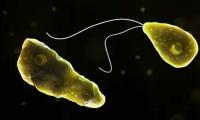HYDERABAD: Inland fisherfolk of Sindh cry out against lack of mapping for lakes, which enables encroachment by private parties, and have submitted recommendations to inland fisheries department for development of this sector, which provides livelihoods to more than 400,000 families.
Fisherfolk hailing from Manchhar Lake in Jamshoro district, Keenjhar Lake in Thatta district, Chotiari reservoir in Sanghar and other freshwater bodies asked the government to rehabilitate natural waters through various interventions, so the community could have a sustainable source of livelihood.
They said that there were visible threats to the source of livelihoods of the people residing along these wetlands due to degradation of natural waters.
Manchar Lake community leader Mustafa Mirani, who led the delegation who met the inland fisheries officials, said, “We just want the Sindh inland fisheries department to strengthen coordination within government stakeholders.”
This coordination was needed to keep the support mechanism of the fisheries department intact.
Citing an example, Mirani said, “The fisheries department officials put fish seeds in the water to increase community access to higher fish catch; however, at the same time, the irrigation department officials open the outlets to irrigate fields, which also removes fish seeds from the water.”
This turns the whole exercise futile, he said, adding that if there was better coordination, the government would save resources and also fulfil its duty towards the people.
Similarly, Irrigation, Sindh Wildlife, Revenue department, Sindh Environment Protection Agency (SEPA), Culture and Tourism departments have a stake in these waters. But due to lack of coordination, the community people suffer.
Mirani also said that due to a lack of demarcation when it comes to natural water bodies, sometimes the source that feeds water to the body was cut, enabling local landlords to encroach upon the land, which deprived the community of their source of income and consumption.
Despite protests, he pointed out that the revenue department had not taken action against violation by landlords to save natural lakes.
Kalankar Lake in Achhro Thar (white desert) in Sanghar district, once a scenic water body, was now occupied by certain landlords. The encroachers have disconnected the lake from its natural feeding sources (canal), and the lake was now dying gradually.
There were many other water bodies, which were being deprived of their water share. These practices were harming biodiversity as well, the activists said.
Achhro Thar has clusters of natural lakes surrounded by sand dunes, which used to get water from old canals and rains. But now these waters were being degraded deliberately, so the land could instead be used for farming.
These water bodies were not only a source of livelihoods, but the people depend on these waters for domestic use as well.
Reports gathered from community activists show that local fisherfolk faced problems in marketing their catch, despite it being organic. A strong network of middlemen bought fish from the local landing sites at meagre rates to sell the same at a high price in various markets.
Ramzan Mallah, a community leader from Chotiari reservoir said, “We have suggested the authorities to form cooperative societies at major waters or at district level with provision of structures that encourage the role of the community.”
He demanded to take action and stop the exploitation of the community people at the hands of local middlemen and traders, who deprive the fishermen of a fair price for their products.
“Government has established hatcheries, which are producing fish seeds, but we have asked to produce indigenous fish seeds. These native seeds have capacity to survive in natural vegetation without chemical feed,” he said.
What the fishermen catch from the lakes was organic. So if the government wants to introduce fish seeds to these water bodies, it should also focus on indigenous varieties that were better adapted to the environment. He pointed out that fish produced at private farms were harmful for human health, as they survived on a lot of chemicals. Originally, there were around 52 fish species in Sindh inland waters, out of which hardly a few have survived in the lakes, which receive fresh water.
Manchhar Lake being a larger water body has only two three indigenous fish species, while others have been depleted due to receiving contaminated water through Main Nara Valley (MNV) drainage.
The government’s fisheries department asked community leaders to give proposals for the development of waters under the World Bank-funded Sindh Agriculture Growth Project (SAGP), which was working simultaneously for the agriculture, livestock and fisheries sectors.
Sindh Inland Fisheries Director General Mir Allahdad Talpur said that initially, community stakeholders from major waters were invited to provide suggestions till June 30, 2021 so they could be submitted to the provincial government for approval.
“We have formed a committee, comprising community activists for this purpose. It is just an assessment and then the government is interested to support the people and increasing productivity,” Talpur said.
Talking about demarcation of inland waters, the DG said, “We have authority to see waters, its share of water and livelihood and not land. Demarcation of lakes must be done.”
He said they have already asked the government to ensure demarcation of lakes to avoid encroachment, but it was yet to be decided upon.
The development programmes include provision of small boats, equipment, grants for landing sites, besides providing fish seed in freshwaters. Community activists cried against the way the fisheries department officials were adding fish seeds to the water bodies without taking them on board.
Further, there have been reports of attacks by armed men on fishermen during their livelihood activities. Certain landlords wanted to occupy natural wetlands for cultivation.
The image shows founder of Akhuwat Foundation Dr Amjad Saqib along with President and CEO of Faysal Bank Yousaf...
The logo of the Matco Foods Limited. — Facebook@matcofoods/FileKARACHI: Matco Foods Limited has entered into a...
A woman looks at a gold bangle inside a jewellery showroom at a market in Mumbai January 15, 2015. — ReutersKARACHI:...
Employees working at cargo ship Kypros Land which is loading soybeans to China at Tiplam terminal in Santos, Brazil,...
This undated image shows a policeman running past a burning vehicle in Karachi. — AFP/FileLAHORE: Rule of law in...
The Apple Inc logo is seen at the entrance to the Apple store in Brussels, Belgium November 28, 2022. —Apple Inc’s...







